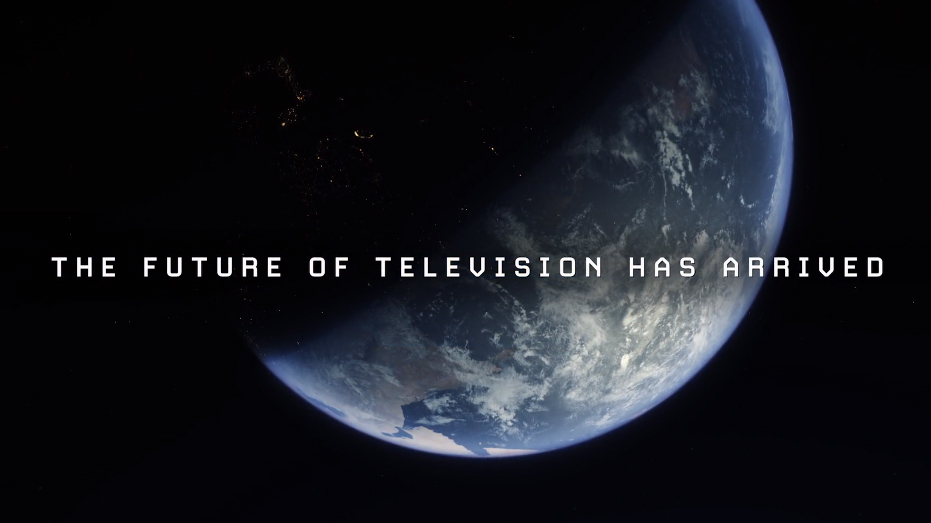ATSC: Nurturing a Legacy of Excellence With High-Quality Content
Advancing adoption of new specs like NextGen TV takes more than just technology

As we commemorate the remarkable 40-year journey of the Advanced Television Systems Committee (ATSC), it is essential to recognize the pivotal role that high-quality content has played in the success of digital television broadcasting. This significant milestone calls for both celebration and introspection, emphasizing the significance of content in driving the widespread adoption and utilization of ATSC standards, particularly the latest, ATSC 3.0.

While technology serves as a necessary foundation, it alone is insufficient in the dynamic media industry. The availability of captivating high-quality content is a requisite to unleash the potential of the technology and accelerate its adoption.
During the NextGen Broadcast Conference 2023 on June 15, FCC commissioner Nathan Simington emphasized the importance of differentiating content between ATSC 1.0 and ATSC 3.0, with the aim of attracting viewers to preferentially gravitate towards ATSC 3.0 content. This preference establishes a pathway for the successful transition to the new standard.
The Symbiotic Relationship Between Technology and Content: Reflecting on the remarkable achievements of the ATSC over the past four decades, it becomes evident that the evolution of digital television broadcasting relies on a symbiotic relationship between technology and content. ATSC’s advancements in standards and transmission protocols have paved the way for enhanced viewer experiences and expanded possibilities for content creators. However, it is the creative prowess, innovation and storytelling excellence of content providers that captivates audiences and fosters loyalty.
The Role of Content Producers and Broadcasters: Recognizing the pivotal role that content producers and broadcasters play in driving the demand for ATSC 3.0 is of utmost importance. By understanding the capabilities of ATSC 3.0 and aligning their content production strategies accordingly, producers and broadcasters can effectively leverage the innovations in digital television broadcasting and offer a better quality of experience (QoE).
Understanding the Media Ecology: To comprehend the impact of ATSC and its co-existence with other media technologies, we must acknowledge that no medium operates in isolation. Each medium exists within a broader ecosystem comprising various platforms, technologies and diverse content. Therefore, when introducing a new medium like ATSC 3.0, it becomes crucial to assess its interactions and integration with existing and emerging media, such as traditional broadcast platforms like ATSC 1.0, streaming services, online content platforms like over-the-top (OTT) and FAST channels, as well as DOCSIS 4.0 and 5G.
Human experiences drive the evolution of the media ecosystem, as they influence content preferences and social dynamics that shape the demand for specific types of content and the adoption of different technologies.
The Power of AI in Content Production: The advent of artificial intelligence (AI) has brought about a transformative revolution in audiovisual content production, increasing efficiency and unleashing creativity. Through computer vision technologies, the process of capturing, editing and stitching video content has been streamlined, enabling content creators to achieve remarkable results in a fraction of the time. This AI-driven efficiency has reduced the previous barriers of low efficiency and high costs associated with high-quality content production, providing content creators with a newfound freedom to explore their creativity and bring their visions to life.
The Co-Evolutionary Process of the Media Landscape: The media landscape is a dynamic and interconnected ecosystem in which content, technologies, and human experiences co-evolve. This co-evolution entails reciprocal influences and adaptations among these elements, constantly shaping and transforming the media ecosystem over time.
Content creators have a crucial role in cultivating this ecosystem by producing innovative, thought-provoking, and entertaining content that captures attention and resonates with viewers.
Technologies serve as enablers within the media ecosystem, introducing new possibilities and revolutionizing the creation, distribution, and consumption of content.
Human experiences drive the evolution of the media ecosystem, as they influence content preferences and social dynamics that shape the demand for specific types of content and the adoption of different technologies.
This co-evolutionary process is characterized by constant feedback loops and adaptations that drive innovation and progress. Evolving content preferences and user behaviors influence the development of new technologies, creating a continuous cycle of innovations.
In celebrating 40 years of ATSC, it is important to recognize the indispensable role of high-quality content in shaping its success. Content producers and broadcasters hold the key to harnessing the capabilities of this technology and creating exceptional experiences for viewers.
Understanding the interconnected nature of media technologies, content production, and audience experiences is paramount for continuous innovation and adaptation. By nurturing the symbiotic relationship between the medium and content, we can cultivate a vibrant and relevant media landscape that evolves with the needs and preferences of audiences. With a commitment to high-quality content, we can ensure that ATSC’s legacy endures, driving the future of exceptional digital television broadcasting.
Broadcasting & Cable Newsletter
The smarter way to stay on top of broadcasting and cable industry. Sign up below
Ling Ling Sun is chief technology officer at Nebraska Public Media.
